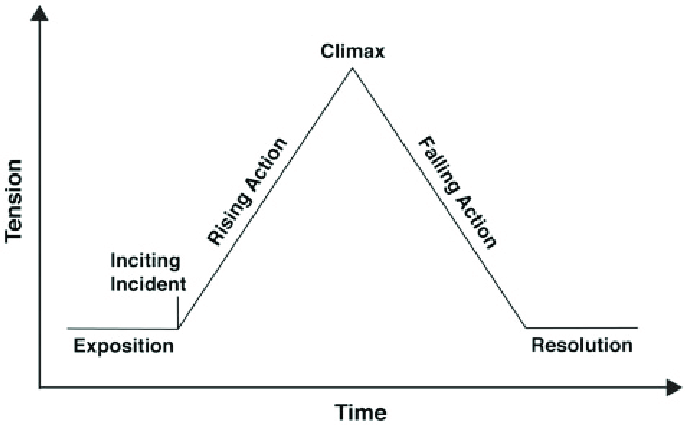Some screenwriters believe that the protagonist is the good character and the antagonist is the bad character, but is this true? Most screenwriters go a step further, believing that the protagonist wants something and the antagonist is the character who tries to stop the protagonist from achieving his or her goal, but is that absolutely true?
Another area of confusion for screenwriters is that since the protagonist is the good character and the antagonist is the bad character, who then is the main character? Is the main character still the same character as the protagonist? If yes, why don’t we just call the main character the protagonist and forget calling another character the main character?
If you’ve ever been this confused about these character titles, the role they play in a movie, and how to identify them, that will be a thing of the past because this post will expose everything you need to know about them. Let’s get the first thing straight: without a protagonist, there isn’t a story. That brings us to the next question: who really is a protagonist?
WHO REALLY IS A PROTAGONIST?
There are millions of definitions as to who a protagonist is, but the simplest of them all is that a protagonist is the character who pushes the story or plot forward through the decisions he or she makes.
THE IMPORTANCE OF A PROTAGONIST IN STORYTELLING
From the definition of a protagonist above, the major importance of a protagonist is to move the story forward. No other character in a story can do that. Let’s see an image (Freytag Pyramid) from Research Gate.

From the image above of a plot structure, you can see that there are different stages and that to move from one stage to the next, the screenwriter, every character, and the story depend on the protagonist to take the first step to move from the exposition to the rising action, to the climax to the falling action, and to the resolution. This simply means that if the protagonist is static, everything concerning the story you’re telling will also be static.
QUALITIES OF A PROTAGONIST
1) Goal-oriented: The reason why the protagonist is so powerful is that he or she always wants something, and it’s his or her desire that causes him or her to make decisions that push the story forward.
2) Decision Maker: To know the protagonist in a movie or in your story, look for the character that makes critical decisions that change the whole dynamics of the story.
THE PARTIAL TRUTH ABOUT AN ANTAGONIST
Some screenwriters say that the antagonist is the character who tries to stop the protagonist from achieving their goals. Even though this definition sounds correct, it is only correct when the protagonist and the main character are the same person.
Since there are no formulas for writing a story, there are some stories where the antagonistic character isn’t after the protagonist but after the main character, and in these types of stories, you can see that the above definition isn’t exactly true.
WHAT IS TRUE ABOUT AN ANTAGONIST?
Scenario One: When the protagonist and the main character are the same person, the antagonistic character goes after the protagonist because he or she is also the main character.
Scenario Two: When the protagonist is different from the main character, the antagonist leaves the protagonist and goes after the main character. Let me use a typical Nollywood movie to illustrate this.
WHEN THE PROTAGONIST AND THE MAIN CHARACTER ARE THE SAME
This is a story about a man who killed a lady’s mother whilst he was a thug, but now he’s repented and goes job hunting. The lady whose mother he killed is in charge of recruitment in the whole city, and she’s out for revenge to make sure he doesn’t get a job anywhere in the city.
In this story, the man doubles as the protagonist and the main character, and the lady becomes the antagonist. The lady isn’t after the protagonist, but after the main character.
WHEN THE PROTAGONIST AND THE MAIN CHARACTER ARE DIFFERENT
This is a story about a mother whose son has been married to a lady for twelve years, and the lady hasn’t given birth to any children. In this story, the son is the protagonist, the lady becomes the main character, and the mother becomes the antagonist. The question is, “Who is the antagonist after?” She’s after the lady, not her son.
From the above, you can see that these two scenarios have gone ahead to show that an antagonist only goes after the main character in a story. Who exactly is an antagonist?
WHO IS AN ANTAGONIST?
An antagonist is a character who tries to inflict pain on the main character. I know you think my definition should be “an antagonist is the character who tries to stop the main character from achieving their goals,” but the question is, do main characters have goals? The answer is no. Protagonists are the only characters with goals. A main character can have a goal only when he or she is the same person as the protagonist.
ARE ANTAGONISTS ALWAYS BAD CHARACTERS?
The answer is no. The antagonistic character in a story isn’t necessarily the bad character, but an antagonist is always the opposite of the main character. Let’s see some examples together.
Example 1: The Good Antagonist
If the main character spends too much money, the antagonist becomes the character who tries to inflict pain on the main character by teaching him or her how to spend wisely. Even though the character is called the antagonist in this case, we all know that the antagonist is doing something good.
Example 2: The Bad Antagonist
If the main character is a herbal doctor who heals everyone who comes to him, the antagonist becomes a jealous character whose aim is to inflict pain on the main character by chasing all the herbal doctor’s clients away.
WHO IS THE MAIN CHARACTER?
The main character in a story is the character who is affected by the decision of the protagonist. What this means is that if the protagonist and main character are the same person, the decision made affects the same person. If the main character and the protagonist aren’t the same person, the decision made affects another character who is the main character.
THE DIFFERENCE BETWEEN PROTAGONISTS AND MAIN CHARACTERS
The differences below should help you identify who they are in your story, and this difference exists only if and only if they are different characters.
1) Protagonists have goals, but the main character doesn’t have a goal.
2) The dress of the plot structure fits the protagonists when it’s worn but doesn’t fit the main characters.
3) Protagonists make decisions, and the protagonist’s decisions have an impact on the main character.
4) Main characters don’t push stories forward; protagonists are the only characters that possess such power.
5) Audiences are more focused on the main character’s journey than the protagonist’s.
6) Protagonists and antagonists can work together to hurt the main character, but the main character can never join forces with the antagonist because they are always the opposite; that is, they always want different things.
7) The arc of the main characters is always obvious to the audience, but the arc of the protagonists may or may not be obvious to the audience.
